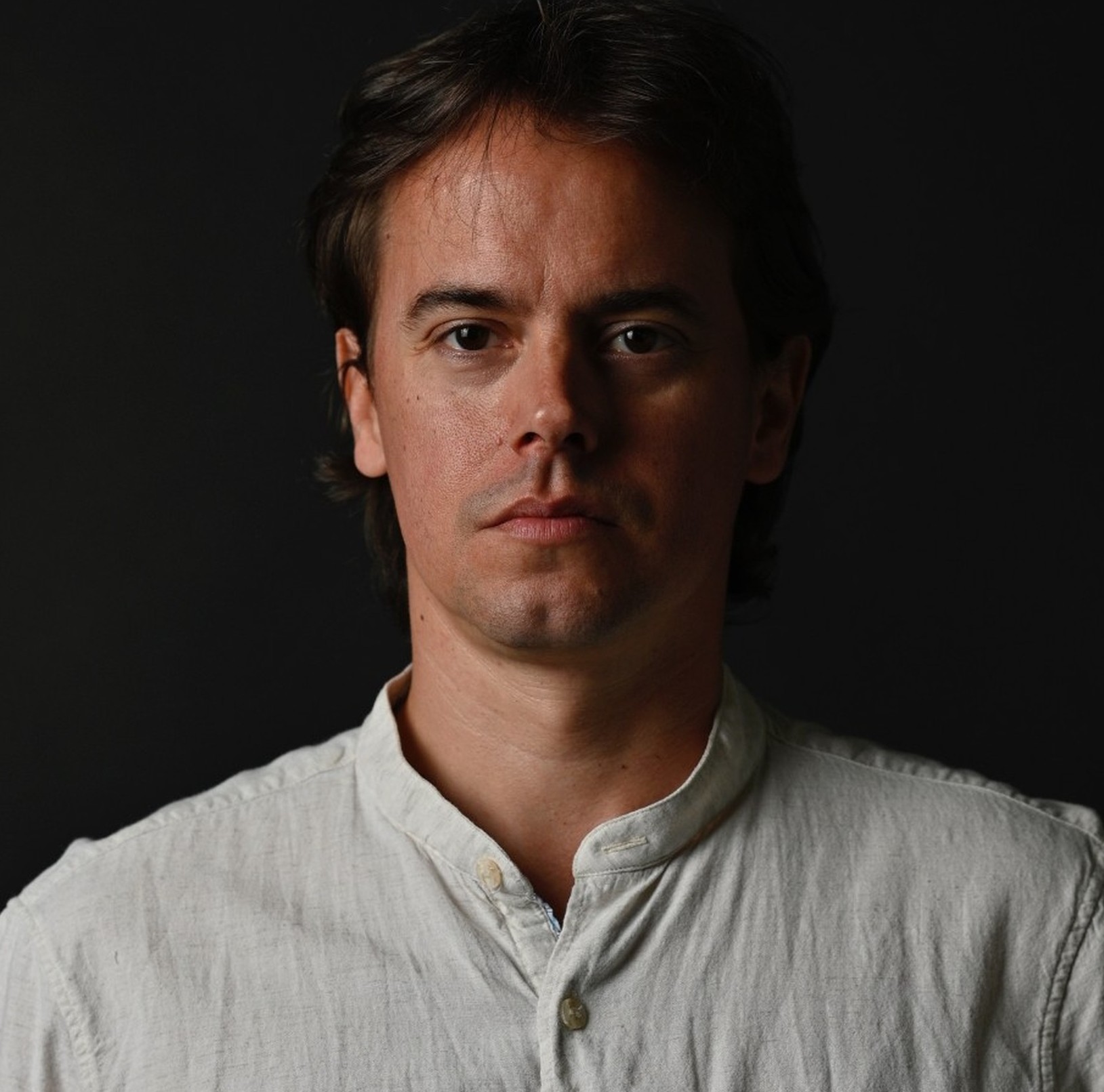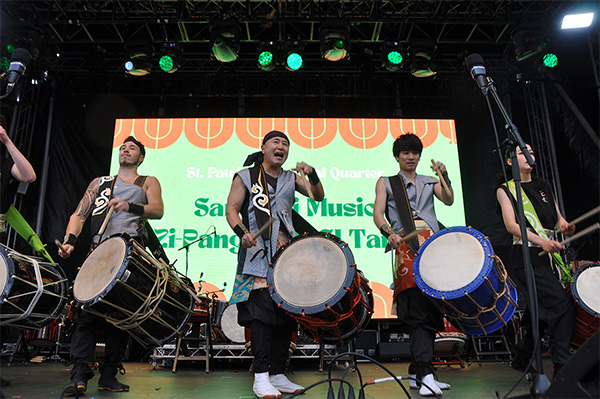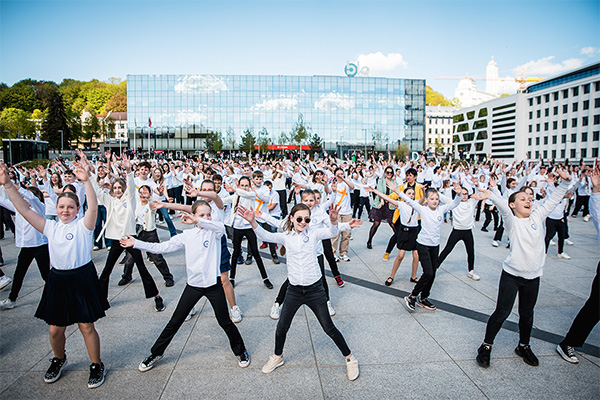Column
ColumnTANZ | MODERNE | TANZ Reflections on Our Collaboration with Kaori Ito
When we invited Kaori Ito to Chemnitz for the TANZ | MODERNE | TANZ 2025 festival, our goal was ambitious but necessary: to help establish contemporary dance for children in our city. Such work is rare in Germany, and we saw this gap as an opportunity to expand cultural participation and foster new, meaningful encounters with dance.
Kaori Ito is deeply rooted in Japanese culture, yet working at the intersection of languages and traditions, she has developed a hybrid choreographic vocabulary that speaks to the unspoken and invisible. Her project Waré Mono—meaning “fragile thing” or “something that breaks”—was inspired by Kintsugi, the Japanese art of repairing broken pottery with gold so that the cracks become part of its beauty rather than something to hide.
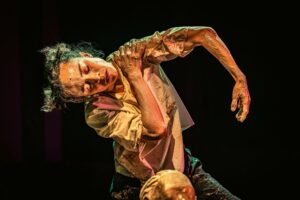
From the earliest conversations, it was clear that Kaori’s approach was both artistically rigorous and deeply human. She wanted the performance to be participatory, not just for children to watch, but to embody. Before the show, children were invited on stage for a workshop led by the performers, Noémi Ettlin and Issue Park. They warmed up together and learned dance steps they would later perform. This wasn’t just an add-on but an essential part of the piece’s dramaturgy: a communal ritual of repair, learning, and shared presence.
On the day of the Chemnitz premiere, the venue was sold out. Yet while we had targeted families, the audience was predominantly elderly—an unexpected result. At first, some worried were raised that the concept would miss its point. But as the performance began with a puppet falling apart on stage, silence settled over the room. The two dancers’ interactions were raw and evocative: approaching and rejecting each other, provoking and reconciling, in a physical dialogue that mirrored human relationships and childhood wounds.
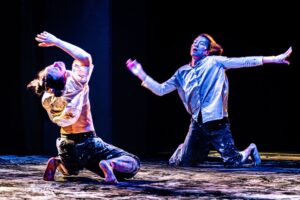
Watching this, we realized the themes of Waré Mono are universal. Despite being designed for children, it spoke powerfully to older viewers. The aesthetics and dramaturgy—combining puppetry, subtle sound design, expressive movement, and a focus on silence and gesture—created a layered experience open to many interpretations.
The most memorable moment was Issue Park’s breathtaking breakdance solo near the end. Performed with astonishing speed and precision, it left the audience in awe. Then the children who had participated in the workshop returned to the stage, dancing alongside the professionals. Thunderous applause erupted. Many elderly spectators were visibly moved, their eyes shining with childlike wonder.
I think that moment was the true success of the project. It broke down generational barriers. Though marketed to children, it turned out to be a work for all ages—an intergenerational experience that reminded everyone of the fragility and beauty of connection, and the possibility of repair.
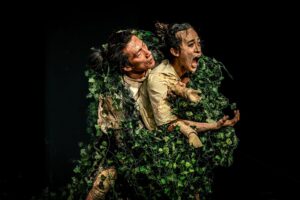
What struck me most was Kaori’s ability to balance cultural specificity with universal relevance. The Kintsugi metaphor is deeply Japanese but resonates everywhere. In Chemnitz—a city with its own history of destruction, division, and rebuilding—the idea of embracing rather than hiding scars felt especially poignant.
Personally, I found her insistence on participation inspiring. The workshop wasn’t just outreach; it was dramaturgy. It taught us that if we want to build new audiences for contemporary dance, we must offer meaningful ways for people—especially children—to engage.
This project also revealed challenges. Our communication strategy focused on children and families, but the actual audience skewed older. Rather than seeing this as a failure, I think it’s a lesson in audience development: there is a hunger for work that is sophisticated yet accessible, even among those who might not be our primary “target group.”
Looking ahead, this collaboration has laid a strong foundation for continued partnership. We are especially excited about Kaori Ito’s next project: a Japanese-French creation exploring onomatopoeia and sacrifice rituals in Japan’s remote mountain regions. Inspired partly by the film The Ballad of Narayama, her new work will tell the story of a younger brother forced to sacrifice himself after his mother’s death.
This is a bold and culturally specific theme that may be unfamiliar to German audiences, but we believe it will spark meaningful reflection here about generational responsibility, poverty, and care. We have already discussed inviting her for the next TANZ | MODERNE | TANZ festival. When the new TANZ | MODERNE | TANZ Center opens in 2026, the plan is to act as a co-production partner and residency host for such intercultural, interdisciplinary work.
Working with Kaori was not always easy—it required trust, flexibility, and openness to different cultural and aesthetic logics. But it was profoundly rewarding. Her commitment to including children not just as audience members but as participants was eye-opening. Her artistic rigor challenged us to rethink our assumptions about what dance for young people can be.
More broadly, we think this project has shown us that contemporary dance for children doesn’t have to be simplistic or patronizing. It can be poetic, layered, and emotionally honest. It can invite all ages to grapple with difficult questions: How do we deal with brokenness? Can our scars be beautiful? How do we heal together?
We went into this hoping to create a meaningful experience for children. We ended up creating one for everyone who attended. That, to me, is the best possible outcome—and the strongest argument for continuing to invest in international, intercultural artistic collaborations in Chemnitz and beyond.

